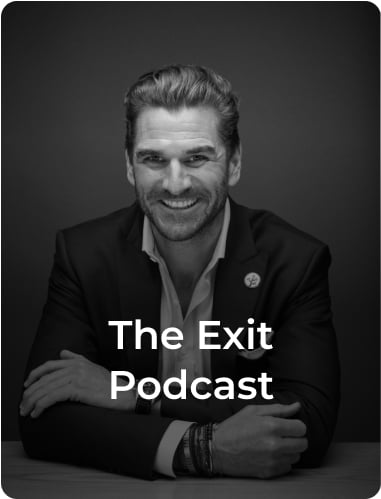
If you go to YouTube and search for “drop-shipping”, you will see how wild this space is currently.
Videos advertising “make $50k in 30 days!” as headlines have sent thousands of entrepreneurs into this space to try to build an outsourced manufacturing and fulfillment business.
The fascinating part of this new wave in drop-shipping entrepreneurs is that it is not a new concept.
Outsourcing how you manufacture and fulfill customer purchases has been around for decades in business, but Shopify has now made it easier than ever to integrate into an online platform.
Shopify has lowered the barrier to entry for entrepreneurs, starting with just $0 on the free trial version to $299 for the pro version. I’ve been fortunate to have met multiple 7 figure drop-shipping entrepreneurs in person and we discussed “how the sausage is made.”
Here is a bit of what I discovered.

A Product’s High Perceived Value
The most important ingredient to a successful drop-shipping business is a high perceived product offering. The perceived value comes from the size of the problem the product is solving for the customer. Finding the right product is often the hardest part of starting, so in my experience and what I’ve learned from entrepreneurs in drop-shipping is that it’s best to start with the problem itself and then search for products that address that problem.
An example of a problem would be people dropping their cell phones and cracking their screens. This product would be a durable phone case that could be purchased for under $10 and sold for $30 – $40. Many people can see themselves paying over $40 for a high-quality phone case that prevents their $1,000 iPhone from braking when dropped.
In addition to solving a specific problem that gives a product high perceived value, there are a few industries that have it baked in. For example, the vast majority of cosmetics, lotions, makeup, and perfumes have a very high perceived value to customers. They address a clear problem for customers and depending on the brand and price point you can often win their business. That leads into brand.
Creating a Brand
When the trend of starting a free trial Shopify store and running Facebook ads to sell products directly from China to customers hit social media influencers, the market flooded with low quality products.
For about a year, products shipped directly from manufacturers in China to customers that had amazing ads on Facebook, worked. This got saturated quickly when people began to have bad customer service experiences and slow shipping times.
Luckily, entrepreneurs in the space began to white label and create brands out of products to differentiate from the “general store” full of gadgets being shipped directly from China based manufacturers on Alibaba.
In 2020, it is now harder than ever to launch one of these non-branded stores and sell products through cold leads from paid ads. Now it’s a fundamental component to success to have a brand associated with your product.
Many teams have created $100 million brands on Shopify using drop-shipping because they’ve spent the time to give customers a great experience and they learned from the previous issues. If you Google “drop-shipping nightmare” you will see the hundreds of articles from both businesses and customers about the bottlenecks.
Audience First Approach
There has been a new approach to dropshipping businesses that I’ve become more and more interested in which stems from products launched by social media influencers.
The first time I heard the “audience first” approach was from the well-known YouTuber, Casey Neistat. He said building a community on social media and selling a product or service is the future of how to build a business. This is something that works especially well with branded drop-shipping and Shopify stores.
When you look at large social media personalities like Logan Paul’s fashion company, Maverick, you can see how hard he’s pushed his brand to his millions of fans over the last few years.
Maverick is easily a high 7 figure eCommerce brand that was born out of Logan Paul’s fame on YouTube. Similarly, take a look at large content creators in the beauty space like Jeffery Star and Kylie Kardashian that launched makeup lines that sold out in minutes, with no cost of marketing.
Of course, the time investment to build an audience of millions takes years and it is an extreme amount of work. However, to be able to sell millions of dollars of any product to an audience in minutes is well worth the time it takes to build your community. The list goes on and on with successful entrepreneurs that have built large social followings and successfully launched brands and that is a strong indicator for what’s coming for future generations of business owners.
Traffic and Paid Ads
Once again, if you search YouTube for drop-shipping tips, it will show you dozens of videos selling courses to learn how to optimize Facebook ads.
There is a lot going on behind the scenes with Facebook ads and I encourage everyone to either learn them yourself or hire someone to manage them for your eCommerce businesses. If you can manage to “crack the code” on Facebook’s return on ad spend (ROAS) for an eCommerce store, you’re going to do extremely well. However, very few understand how hard it is to turn a profit when you’re paying for traffic through ads.
I’ve met with entrepreneurs that made over $1,000,000 in gross revenue but turns out their margin is only 10% due to paid ads. This is definitely a good business for one person to run given $100,000 is double the average salary in the US, but scaling with a 10% margin requires some operational skills.
On the inverse, I’ve met other entrepreneurs that have made over $1,000,000 in gross revenue and generated roughly a 50% profit margin due to amazing performance on their Facebook or Google ads.
Influencers > Paid Ads
The trick that I will share about eCommerce traffic is to leverage theme pages or individual micro influencers on Instagram to promote your eCommerce brand.
If you can find someone with 100,000 followers to post your video ad with the link in their bio for $100 to $200, I’d suggest that when starting out from scratch. The issue with Facebook and Google ads when starting from scratch is you don’t have customer data to provide Facebook or Google with to optimize who sees the ads which in turn makes attention more expensive.
Many spend six figures on ad spend to generate that customer data before the ads become effective. This period of optimizing ads is also referred to as the “learning” period on Google and Facebook ads. The shortcut is having influencers on Instagram or YouTube share your eCommerce store and use that customer data later to run your paid ads.
Drop Shipping For Long Term Success
There are thousands of businesses that use drop shipping for their fulfillment at scale that many people don’t realize. The term has become more popular on social media given “outsourcing fulfillment” doesn’t catch peoples attention as well as “drop shipping.”
The majority of companies who’ve found long term success and outsource their product fulfillment will also build and nurture a strong brand and have high quality control on their product. Adding these important aspects will give their customers a great experience, bringing them back for more and helping spread good will. This is the fundamental difference between long-term versus short-term approaches in most businesses. Making sure your customers are happy and giving them the best possible product across all industries will give you an amazing result as an operator. On the inverse, using out-of-the-box products from Alibaba, overcharging customers, having 25 to 30-day e-pack shipping, not replying to customer complaints, and not monitoring product quality will sink a business as fast as it started.
With that said, these are some of the best examples of well branded niche businesses that have implemented dropshipping as a fulfillment strategy:
Dude Gadgets https://dudegadgets.com/
Mooshe Socks https://www.mooshesocks.com/
Shopepie https://shopepie.com/
What you will notice from these three dropshipping stores is that they are niche brands with strong followings and clever approaches to social media marketing.
For as long as online business has existed, people have been outsourcing their manufacturing and labor. In fact, this exists in the world of brick and mortar as well. Do you really think that the craftsman and owner of the business is helping you out at the register of your local clothing store? The biggest difference right now is that the barrier to entry is incredibly low with tools like Shopify, making it easy for nearly any entrepreneur to get started.
In my experience, I’ve found the best entrepreneurs and business operators tend to test different business models to find what works best for them. With low barriers to entry, this is possible. If you are interested in learning out more about running an eCommerce businesses, I recommend at least testing out a drop shipping business that is well branded and marketed through influencers on Instagram.
Once you’re able to generate some traction through $50 – $100 shoutouts on Instagram from influencers for your business you can start migrating to paid ads. The crux of this business is running paid advertising and keeping a tight margin. If you can manage to maintain a low cost of acquisition through Facebook and Google ads, the sky is the limit.
Often what happens is that entrepreneurs first buying or building a drop shipping site will go after large influencers on social media to test their product but 99% of the time, the smaller the better. When approaching micro-influencers on Instagram and YouTube your goal needs to be engagement. Doing things like giveaways and meme contests are a fantastic way to trigger more engagement sending customers to your brand new drop shipping store. With already built sites from Flippa you’re able to implement your Facebook pixel and jump right into driving targeted traffic.
Drop Servicing
Now that we’ve covered some basics on drop shipping businesses, the YouTube gurus have begun shifting some efforts towards a different model in 2019 and 2020 – Drop Servicing.
Drop servicing is effectively just outsourcing a service and your job as the operator is to drive traffic and close sales for this service. Your profit comes from the difference between the low-cost service fees, ad spend, and what you charge your customers. The most popular fulfillment platforms right now for drop servicing are Upwork and Fiverr where business owners can get extremely inexpensive services on-demand. After going through and experimenting with this business model on my own for a few months I learned a few aspects that are very different from drop shipping products. The biggest difference was that when paying for ads with drop shipping, the most effective platform is Facebook, however the most effective ads for drop servicing were Google ads. This is primarily because when people are looking for services, they are searching on Google and not on social media. When you use Google ads you can jump to the top of the search results depending on your ad bids.
The Problems with a Drop Service Business Model
In terms of operations, drop servicing is dramatically more intense than drop shipping. For example, let’s say you have created a logo design drop service business using Fiverr as your fulfillment.
You pay $10 in Google ads to bring a $50 logo design customer to your new store. You fulfill that order using Fiverr for $10. All in, you have paid $20 to bring in $50 worth of business on this example.
Now, as you’re acting as the middleman, you will need to get the design specifications from your customer, laying out what they want from the service and you’ll also need to provide revisions until they are satisfied with the results. The amount of time you will spend going back and forth for revisions on Fiverr and with your customer will more often than not, far outweigh the $30 profit. This is when, unfortunately, the initial cost increase has to happen in drop servicing to make it worth your time and this presents an issue for the entire process.
If you need to double the cost of your logo design drop servicing business to $100 while capping the amount of revisions, its important to take a step back and realize you’re charging $100 for a $5 to $10 service. In many of these scenarios, when I talk to drop shipping entrepreneurs I just recommend they do paid affiliate marketing for their fulfillment partners and remove the headache entirely of back and forth. Doing a simple affiliate partnership with Fiverr is easy and you make solid commission without dealing with post conversion revisions. Once converted on Fiverr the relationship is started between the buyer and seller.
Overall both of these businesses can be done successfully with a strong brand, quality product, and amazing customer experience.

Recommended for you
Discover more from Flippa
Subscribe to our Blog
Get the latest blog posts, insight reports and news directly to your inbox every week.



















